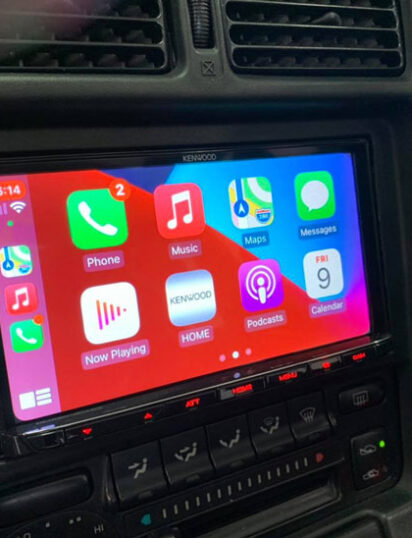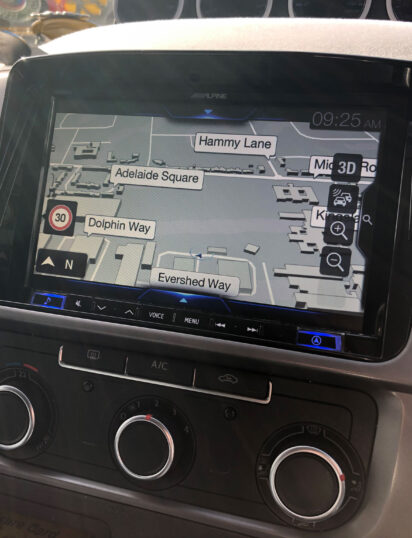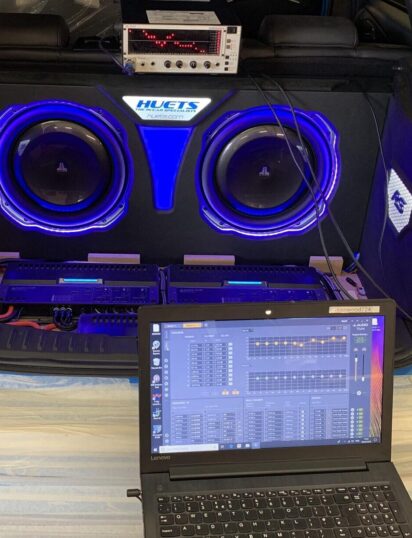Parking assistance sensors come in various guises, usually four sensors in the bumper, this can be rear only, front and rear or front only. More common are reversing and front view cameras. On large vehicles, we use high-level cameras that look down towards the bumper.
Most often, we fit a four-sensor rear-mounted kit. We match these to the car colour using the paint code for an accurate match, so there are no unsightly black circles across the rear. On some installations, we can flush-mount the sensors into the bumper, which means that with the paint match, they are barely visible. As the vehicle is reversed, the audible warning beeps progressively get faster as you approach the obstruction, and it changes to a solid tone approx 45cm (18inch) away. If the car has a towbar, rear step or maybe an overhanging spare wheel on a 4×4 on this can be accommodated for. Optionally displays can be fitted to give a visual indication as well as the sound.
A front kit is similar except it is activated automatically when the ignition is turned on with an override switch, as most factory-fitted systems are or can be connected in such a way that it monitors the speed of the car and turns on and off at a preset speed, normally about 5 MPH.
Different kits are available for vehicles with metal rear bumpers (vans, Land Rovers) where a conventional kit cannot be used, also for larger commercials and trailers with sensors built into side marker units, which change colour to indicate the distance.
Cameras are now becoming more popular due to the reduction in cost and increase in performance for both front and rear. These originally started by being mainly fitted to vans and trucks where there was no or poor rear visibility, and are a legal requirement in some cases.
There is a wide range available for different applications, some only 30mm square to hide under a panel or behind a grill, built into number plate lights or surround or flush mounted into a panel/bumper. Some also have infrared LEDs for better performance in the dark, but with improvements in sensitivity in low light conditions, this is becoming less needed.
The new generation with multi-view allows the camera to “see” down the road if, for example, pulling out of a side turning or parking space when front mounted or switch between rear view, almost like a mirror or top looking down on the rear bumper for accurate manoeuvring for example to reverse up to a trailer without hitting the rear of the tow vehicle.
We’ve also fitted cameras in the rear of horseboxes to monitor the horses, front and rear cameras to aid hitching up a tow ball and connected to hard drive/SD recorders to keep a record of driving conditions and incidents.
Twin lenses in one body are becoming established as a popular choice for motor homes and vehicles with poor or no rear visibility. This has a wide-view camera looking down towards the bumper for reversing up to something, manoeuvring into a loading bay or parking. The second lens is more horizontal with a narrower viewing angle and looks down the road to use as you would a conventional mirror. The image can be displayed on a standalone monitor, navigation system screen or a rear view mirror with an integrated screen for the picture.


